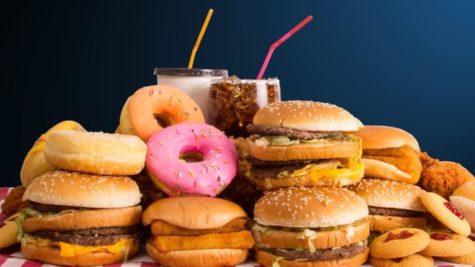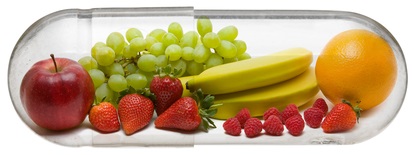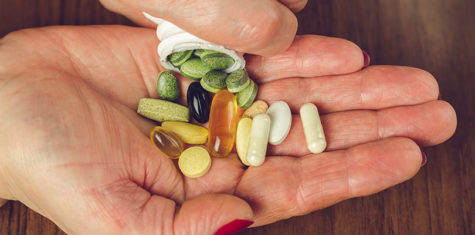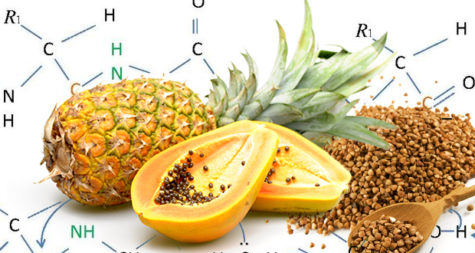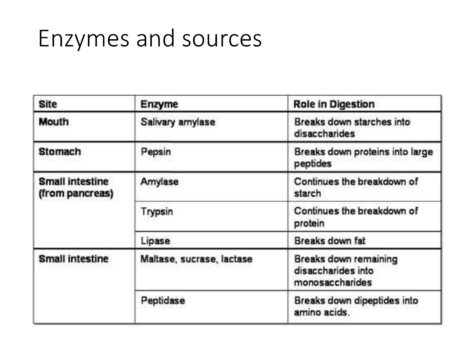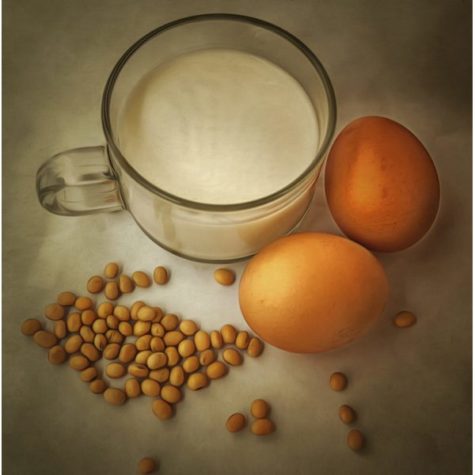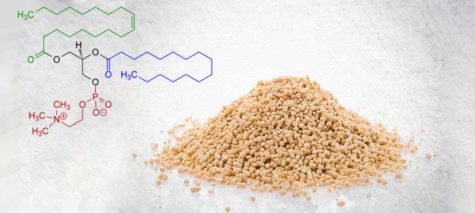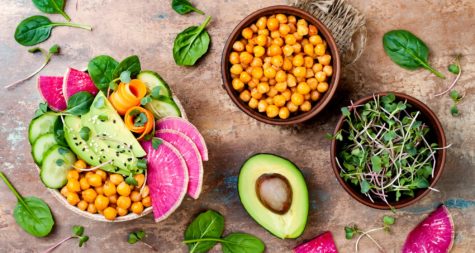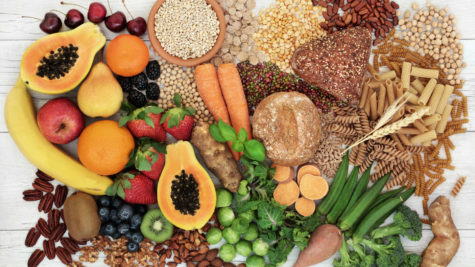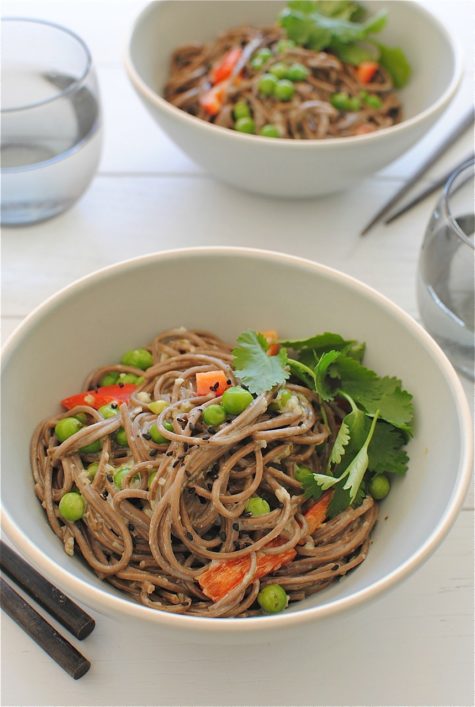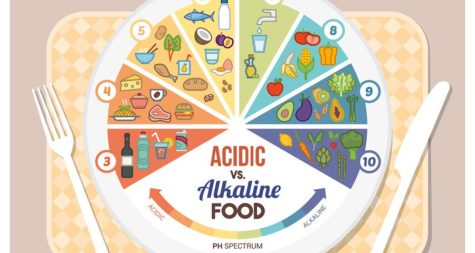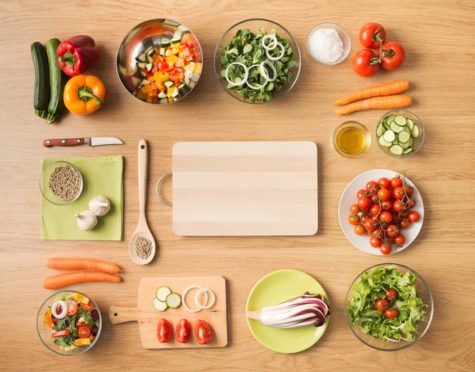Dietary Guidelines
Why can’t I stop eating?
Here’s what Osho says in answer to that question:
Food is always a substitute for love. People who don’t love, who somehow miss a life of love, start eating more; it is a love-substitute.
When a child is born, his first love and his first food are the same thing — the mother. So there is a deep association between food and love; in fact food comes first and then love follows. First the child eats the mother, then by and by he becomes aware that the mother is not just food; she loves him too. But of course for that a certain Growth is necessary. The first day the child cannot understand love. He understands the language of food, the natural primitive language of all animals. The child is born with hunger; food is needed immediately. Love will not be needed until long after; it is not so much of an emergency. One can live without love one’s whole life, but one cannot live without food — that’s the trouble.
So the child becomes aware of the association of food and love. By and by he feels too, that whenever the mother is very loving, she gives her breast in a different way. When she is not loving, but angry, sad, she gives the breast very reluctantly, or does not give it at all. So the child becomes aware that whenever the mother is loving, whenever food is available, love is available. Whenever food is not available, the child feels love is not available, and vice versa. This is in the unconscious.
Somewhere you are missing a life of love so you eat more — that’s a substitute. You go on filling yourself with food and leave no space inside. So there is no question of love, because there is no space left. And with food things are simple because food is dead. You can go on eating as much as you want — food cannot say no. If you stop eating, the food cannot say that you are offending it. One remains a master with food.
But in love you are no longer the master. Another being enters into your life, a dependency enters into your life. You are no longer independent, and that’s the fear.
Ego wants to be independent and ego won’t allow you to love; it will only allow you to eat more. If you want to love then the ego has to be dropped.
It is not a question of food; food is simply symptomatic. So I will not say anything about food, about dieting or doing anything. Because that won’t help you, you won’t succeed. You can try a thousand and one ways; that won’t help. Rather, I will say forget about food, go on eating as much as you want.
Start a life of love, fall in love, find somebody who you can love, and immediately you will see you are not eating so much.
Have you watched? — if you are happy you don’t eat too much. If you are sad you eat too much. People think that when they are happy they eat too much, but that is absolute nonsense. A happy person feels so fulfilled that he feels no space inside. An unhappy man goes on throwing food into himself.
So I won’t touch on food at all…and you continue as you are, but find a lover.
Above All,
Don’t Wobble
About Minerals
 Minerals play an important role in every bodily function and are present in every human cell. Although the amount needed may be small, without even the trace of the mineral, dysfunction is bound to occur at some level in the body. A zinc deficiency may show up in ridged fingernails with white spots. Lack of sulfur can cause lack-luster hair and dull-looking skin. Less obvious deficiencies may surface as fatigue, irritability, loss of memory, nervousness, depression and weakness.
Minerals play an important role in every bodily function and are present in every human cell. Although the amount needed may be small, without even the trace of the mineral, dysfunction is bound to occur at some level in the body. A zinc deficiency may show up in ridged fingernails with white spots. Lack of sulfur can cause lack-luster hair and dull-looking skin. Less obvious deficiencies may surface as fatigue, irritability, loss of memory, nervousness, depression and weakness.
Minerals also interact with vitamins. Magnesium, for instance, must be present in the body for utilization of B-complex, C and E vitamins. Sulfur also works with the B-complex vitamins. The body needs all the trace minerals in proper balance.
Coffee, tea, alcohol, excess salt and many drugs can rob the body of minerals or make them ineffective. Industrial pollutants cause toxic minerals to enter the body. Minerals at toxic levels also have the effect of destroying the usefulness of other vitamins and minerals.
Exercise improves the activity of certain vitamins and minerals while stress and fatigue work against them. A well-balanced diet provides as abundance of minerals and vitamins. In refining cereals, grains and sugar, we have robbed them of their natural vitamins and minerals.
The dietary sources of these nutrients are whole grains, cereals, bran and germ. It is the bran and germ which are removed in processing. To obtain a balance of nutrients, it is, therefore, necessary to avoid refined and processed foods but an intake of adequate green leafy vegetables which are an excellent source of many nutrients should be ensured.
The mineral elements which are needed by the body in substantial amounts are calcium, phosphorous, iron, sulfur, magnesium, sodium, potassium and chlorine. In addition the body needs minute (trace) amounts of iodine, copper, cobalt, manganese, zinc, selenium, silicon, fluorine and some others.
The various functions of common minerals, their deficiency symptoms, and natural sources are discussed in brief as follows:
-
Calcium
The human body needs calcium more than any other mineral. A man weighing 70 kg. contains one kg. of calcium. About 99 per cent of the quantity in the body is used for building strong bones and teeth and the remaining one per cent is used by the blood, muscles and nerves.
Calcium performs many important functions. Without this mineral , the contractions of the heart would be faulty, the muscles would not contract properly to make the limbs move and blood would not clot. Calcium stimulates enzymes in the digestive process and coordinates the functions of all other minerals in the body.
Calcium is found in milk and milk products, whole wheat, leafy vegetables such as lettuce, spinach, and cabbage , carrots, watercress, oranges, lemons, almonds, figs and walnuts. Deficiency may cause porous and fragile bones, tooth decay, heart palpitations, muscle cramps, insomnia and irritability.
-
Phosphorus
It combines with calcium to create the calcium-phorphorus balance necessary for the growth of bones and teeth and in the formation of nerve cells. This mineral is also essential for the assimilation of carbohydrates and fats. It is a stimulant to the nerves and brain.
Phosphorous is found in abundance in cereals, pulses, nuts, egg yolk, fruit juices, milk and legumes. A phosphorous deficiency may bring about loss of weight, retarded growth, reduced sexual powers and general weakness. It may result in poor mineralization of bones, deficient nerve and brain function.
-
Iron
Iron is an important mineral which enters into the vital activity of the blood and glands. Iron exists chiefly as hemoglobin in the blood. It distributes the oxygen inhaled into the lungs to all the cells. It is the master mineral which creates warms, vitality and stamina. It is required for the healthy complexion and for building up resistance in the body.
The chief sources of iron are grapes, raisins, spinach, all green vegetables, whole grain, cereals, dried beans, dark colored fruits, beets, dates, liver and egg yolk.
Deficiency of dietary iron may cause nutritional-anemia, lowered resistance to disease, a general run down condition, pale complexion, shortness of breath on manual exertion and loss of interest in sex.
-
Sulphur
All living matter contains some sulphur; this element is therefore essential for life. The greater part of the sulphur in the human body is present in the two sulphur-containing amino acids, methionine and cysteine, or in the double form of the latter cystine.
The main purpose of sulphur is to dissolve waste materials. It helps to eject some of the waste and poisons from the system. It helps keep the skin clear of blemishes and makes hair glossy. It is also valuable in rheumatic conditions.
The main sulphur-containing foods are radishes, carrots, cabbage, cheese, dried beans, fish and eggs. A diet sufficient in protein will generally be adequate in sulphur. Deficiency of sulphur may cause eczema and imperfect development of hair and nails.
-
Magnesium
All human tissues contain small amounts of magnesium. Next to potassium, magnesium is the predominant metallic action in living cells. The bones seem to provide a reserve supply of this mineral in case of shortage elsewhere in the body. Biochemists call magnesium the “cool, alkaline, refreshing, sleep-promoting mineral”. Magnesium helps one keep calm and cool during the sweltering summer months. It aids in keeping nerves relaxed and normally balanced. It is necessary for all muscular activity.
This mineral is in activator for most of the enzyme system involving carbohydrate, fat and protein in energy-producing reactions. Magnesium promotes a healthier cardiovascular system and aids in fighting depression. It helps prevent calcium deposits in kidneys and gallstones and also brings relief from indigestion.
Magnesium is widely distributed in foods. It is a part of the chlorophyll in green vegetables. Other good sources of this mineral are nuts, soy beans, alfalfa, apples, figs, lemons, peaches, almonds, whole grains, brown rice, sunflower seeds and sesame seeds.
Deficiency can lead to kidney damage and kidney stones, muscle cramps, arteriosclerosis, heart attack, epileptic seizures, nervous irritability, marked depression and confusion, impaired protein metabolism and premature wrinkles.
-
Sodium
Sodium Chloride , the chemical name for common salt, contains 39 per cent of sodium, an element which never occurs in free form in nature. It is found in an associated form with many minerals especially in plentiful amounts with chlorine. Sodium is the most abundant chemical in the extra-cellular fluid of the body. It acts with other electrolytes, especially potassium, in the intracellular fluid, to regulate the osmotic pressure and maintain a proper water balance within the body. It is a major factor in maintaining acid-base equilibrium, in transmitting nerve impulses, and in relaxing muscles. It is also required for glucose absorption and for the transport of other nutrients across cell membranes.
There is some natural salt in every food we eat. Vegetable foods rich in sodium are celery, cucumbers, watermelon, lemons, oranges, grapefruit, beet-tops, cabbage, lettuce, corn, lady’s fingers, apple, berries, pears, squash, pumpkin, peaches, lentils, almonds and walnuts. Animal food sources include shell fish, lean beef, kidney, bacon and cheese.
Both deficiency and excess of salt may produce adverse effects on the human body. Deficiencies of sodium are, however, rare and may be caused by excessive sweating, prolonged use of diuretics, or chronic diarrhea. Deficiency may lead to nausea, muscular weakness, heat exhaustion, mental apathy and respiratory failure.
Over-supply of sodium is a more common problem because of overuse of dietary sodium chloride or common salt. Too much sodium may lead to water retention, high blood pressure, stomach ulcers, stomach cancer, hardening of arteries and heart disease.
-
Potassium
Potassium is essential to the life of every cell of a living being and is among the most generously and widely distributed of all the tissue minerals. Potassium is important as an alkalizing agent in keeping a proper acid-alkaline balance in the blood and tissues. It is essential for muscle contraction and therefore, important for proper heart function. It promotes the secretion of hormones and helps the kidneys in detoxification of blood. Potassium prevents female disorders by stimulating the endocrine hormone production. It is involved in the proper functioning of the nervous system and helps overcome fatigue. It also aids in clear thinking by sending oxygen to the brain and assists in reducing blood pressure.
Potassium is widely distributed in foods. All vegetables, especially green, leafy vegetables, grapes, oranges, lemons, raisins, whole grains, lentils, sunflower seeds, nuts, milk, cottage cheese and butter milk are rich sources. Potatoes, especial potato peelings, and bananas are especially good sources.
Potassium deficiency may occur during gastrointestinal disturbances with severe vomiting and diarrhea, diabetic acidosis and potassium-losing nephritis. It causes undue nervous and body tiredness, palpitation of the heart, cloudiness of the mind, nervous shaking of the hands and feet, great sensitivity of the nerves to cold, and excessive perspiration of the feet and hands.
-
Chlorine
This food element is necessary for the manufacture of glandular hormone secretions. It prevents the building of excessive fat and auto-intoxication. Chlorine regulates the blood’s alkaline -acid balance and works with Potassium in a compound form. It aids in the cleaning out of body waste by helping the liver to function.
Chlorine is found in cheese and other milk products, green leafy vegetables, tomatoes, all berries, rice, radishes, lentils, coconuts and egg yolk. Deficiency of this mineral can cause loss of hair and teeth.
-
Iodine
The chief store-house of iodine in the body is the thyroid gland. The essential thyroxine, which is secreted by this gland, is made by the circulating iodine. Thyroxine is a wonder chemical which controls the basic metabolism and oxygen consumption of tissues. It increases the heart rate as well as urinary calcium excretion. Iodine regulates the rate of energy production and body weight and promotes proper growth. It improves mental alacrity and promotes healthy hair, nails, skin and teeth.
The best dietary sources of iodine are kelp and other seaweeds. Other good sources are turnip greens, garlic, watercress, pineapples, pears, artichokes, citrus fruits, egg yolk and seafood and fish liver oils. Deficiency can cause goiter and enlargement of the thyroid glands.
-
Copper
This mineral helps in the conversion of iron into hemoglobin. It stimulates the growth of red blood cells. It is also an integral part of certain digestive enzymes. It makes the amino acid tyrosine usable, enabling it to work as the pigmentation factor for hair and skin. It is also essential for the utilization of vitamin C.
Copper is found in most foods containing iron, especially in almonds, dried beans, peas, lentils, whole wheat, prunes and egg yolk. A copper deficiency may result in bodily weakness, digestive disturbances and impaired respiration.
-
Cobalt
Cobalt is a component of vitamin B12, a nutritional factor necessary for the formation of red blood cells. Recent research in vitamin B12 has shown that its pink color is attributed to the presence of cobalt in it. The presence of this mineral in foods helps the synthesis of hemoglobin and the absorption of food-iron.
The best dietary sources of cobalt are meat, kidney and liver. All green leafy vegetables contain some amount of this mineral.
-
Manganese
This mineral helps nourish the nerves and brain and aids in the coordination of nerve impulses and muscular actions. It helps eliminate fatigue and reduces nervous irritability.
Manganese is found in citrus fruits, the outer covering of nuts, grains, in the green leaves of edible plants, fish and raw egg yolk. A deficiency of this mineral can lead to dizziness, poor elasticity in the muscles, confused thinking and poor memory.
-
Zinc
Our need for this mineral is small but its role in growth and well-being is enormous, starting before birth. It is needed for healthy skin and hair, proper healing of wounds, successful pregnancies and male virility. It plays a vital role in guarding against diseases and infection. It is needed to transport vitamin A to the retina. There are 156 enzymes that require zinc for their functioning. It has long been known that growth and sexual maturity depend on zinc.
The main dietary sources of zinc are milk, liver, beans, meat, whole grains, nuts, and seeds. Deficiency can result in weight loss, skin diseases, loss of hair, poor appetite, diarrhea and frequent infection. Those suffering from rheumatoid arthritis may have a zinc deficiency. Heavy drinkers lose a lot of zinc in their urine.
-
Selenium
Selenium and vitamin E are synergistic and the two together are stronger than the sum of the equal parts. Selenium slows down ageing and hardening of tissues through oxidation. Males seem to have a greater need for this mineral.
Selenium is useful in keeping youthful elasticity in tissues. It alleviates hot flushes and menopausal distress. It also helps in the prevention and treatment of dandruff.
This mineral is found in Brewer’s yeast, garlic, onions, tomatoes, eggs, milk and sea food. Deficiency of this mineral can cause premature loss of stamina.
-
Silicon
This is known as the ” beauty mineral ” as it is essential for the growth of skin, hair shafts, nails and other outer coverings of the body. It also makes the eyes bright and assists in hardening the enamel of the teeth. It is beneficial in all healing process and protects body against many diseases such as tuberculosis, irritations in mucous membranes and skin disorders.
Silicon is found in apples, cherries, grapes, asparagus, beets, onions, almonds, honey, peanuts and the juices of the green leaves of most other vegetables. Deficiency can lead to soft brittle nails, ageing symptoms of skin such as wrinkles, thinning or loss of hair, poor bone development, insomnia, osteoporosis.
-
Flourine
Fluorine is the element that prevents diseases from decaying the body. It is a germicide, and acts as an antidote to poison, sickness and disease. There is a strong affinity between calcium and fluorine. These two elements, when combined, work particularly in the outer parts of bones. They are found in the enamel of the teeth and the shiny, highly polished bone surface.
Fluorine is found in goat’s milk, cauliflower, watercress, garlic, beets, cabbage, spinach and pistachio nuts.
Source:
This information came from A Complete Handbook of Nature Cure, a complete handbook of Naturapathic Medicine. For more in depth information on vitamins, and vitamin therapy visit this post, The Importance of Minerals, over at Alternative Therapies.
About Vitamins
Vitamins are potent organic compounds which are found in small concentrations in foods. They perform specific and vital functions in the body chemistry. They are like electric sparks which help to run human motors. Except for a few exceptions, they cannot be manufactured or synthesized by the organism and their absence or improper absorption results in specific deficiency disease.
Vitamins A, D, E and K are all soluble in fat and fat solvents and are therefore, known as fat-soluble. They are not easily lost by ordinary cooking methods and they can be stored in the body to some extent, mostly in the liver. They are measured in international units.
Vitamin B Complex and C are water soluble. They are dissolved easily in cooking water. A portion of these vitamins may actually be destroyed by heating. They cannot be stored in body and hence they have to be taken daily in foods. Any extra quantity taken in any one day is eliminated as waste. Their values are given in milligrams and micrograms, whichever is appropriate.
The various functions of common vitamins, their deficiency symptoms, and natural sources are discussed in brief as follows:
Vitamin A
Known as anti-opathalmic, vitamin A is essential for growth and vitality. It builds up resistance to respiratory and other infections and works mainly on the eyes, lungs, stomach and intestines. It prevents eye diseases and plays a vital role in nourishing the skin and hair. It helps to prevent premature ageing and senility, increases life expectancy and extends youthfulness.
The main sources of this vitamin are fish liver oil, liver, whole milk, curds, pure ghee, butter, cheese, cream and egg yolk, green leafy and certain yellow root vegetables such as spinach, lettuce, turnip, beets, carrot, cabbage and tomato and ripe fruits such as prunes, mangoes, papaya, apricots, peaches, almonds and other dry fruits.
A prolonged deficiency of vitamin A may result in inflammation of the eyes, poor vision frequent colds, night blindness and increased susceptibility to infections, lack of appetite and vigor, defective teeth and gums and skin disorders.
B Complex Vitamins
There are a large variety of vitamins in the B group, the more important being B1 or thiamine, B2 or riboflavin, B3 or niacin or nicotinic acid, B6 or pyridoxine, B9 or folic acid, B12 and B5 or pantothenic acid. B vitamins are synergistic. They are more potent together than when used separately.
- Thiamine
Known as anti-beberi, anti-neuritic and anti-ageing vitamin, thiamine plays an important role in the normal functioning of the nervous system, the regulation of carbohydrates and good digestion. It protects heart muscle, stimulates brain action and helps prevent constipation. It has a mild diuretic effect.
Valuable sources of this vitamin are wheat germ, yeast, the outer layer of whole grains, cereals, pulses,nuts, peas, legumes, dark green leafy vegetables, milk, egg,banana and apple.
The deficiency of thiamine can cause serious impairment of the digestive system and chronic constipation, loss of weight, diabetes, mental depression, nervous exhaustion and weakness of the heart.
- Riboflavin
Vitamin B2 or riboflavin, also known as vitamin G, is essential for growth and general health as also for healthy eyes, skin, nails and hair. It helps eliminate sore mouth, lips and tongue. It also functions with other substances to metabolize carbohydrates, fats, and protein.
The main sources of this vitamin are green leafy vegetables, milk, cheese, wheat germ, egg, almonds, sunflower, seeds, citrus fruits and tomatoes.
Its deficiency can cause a burning sensation in the legs, lips and tongue, oily skin, premature wrinkles on face and arm and eczema.
- Niacin
Vitamin B3 or niacin or nicotinic acid is essential for proper circulation, healthy functioning of the nervous system and proper protein and carbohydrate metabolism. It is essential for synthesis of sex hormones, cartisone, thyroxin and insulin. It is contained in liver, fish, poultry, peanut, whole wheat,green leafy vegetables, dates, figs, prunes and tomato.
A deficiency can lead to skin eruptions, frequent stools, mental depression, insomnia, chronic headaches, digestive disorders and anemia.
- Pyridoxine
Vitamin B 6 or pyridoxine is actually a group of substance – pyridoxine, pyridoxinal and pyridoxamine – that are closely related and function together. It helps in the absorption of fats and proteins, prevents nervous and skin disorders and protects against degenerative diseases.
The main sources of this vitamin are yeast, wheat, bran, wheat germ, pulses, cereals, banana, walnuts, soy beans, milk, egg, liver, meat and fresh vegetables.
Deficiency can lead to dermatitis, conjunctivitis, anemia, depression, skin disorders, nervousness, insomnia, migraine headaches and heart disease.
- Folic Acid
Vitamin B9 or folic acid, along with vitamin B12 is necessary for the formation of red blood cells. It is essential for the growth and division of all body cells for healing processes. It aids protein metabolism and helps prevent premature graying.
Valuable sources of this vitamin are deep green leafy vegetables such as spinach, lettuce, brewers yeast, mushrooms, nuts, peanuts and liver.
A deficiency can result in certain types of anemia, serious skin disorders, loss of hair, impaired circulation, fatigue and mental depression.
- Pantothenic Acid
Vitamin B5 or pantothenic acid helps in cell building, maintaining normal growth and development of the central nervous system. It stimulates the adrenal glands and increases the production of cortisone and other adrenal hormones. It is essential for conversion of fatty and sugar to energy. It also helps guard against most physical and mental stresses and toxins and increases vitality.
The main sources of this vitamin are whole grain bread and cereals, green vegetables, peas, beans, peanuts and egg yolk. It can be synthesized in the body by intestinal bacteria.
A deficiency can cause chronic fatigue, hypoglycemia, graying and loss of hair, mental depression, stomach disorders, blood and skin disorders.
- Vitamin B12
Vitamin B12 or cobolamin, commonly known as “red vitamin” , is the only vitamin that contains essential mineral elements. It is essential for proper functioning of the central nervous system, production and regeneration of red blood cells and proper utilization of fat, carbohydrates and protein for body building. It also improves concentration, memory and balance.
Valuable sources of this vitamin are kidney, liver, meat, milk, eggs, bananas and peanuts. Its deficiency can lead to certain types of anemia, poor appetite and loss of energy and mental disorders.
- Vitamin C
Vitamin C or ascorbic acid is essential for normal growth and the maintenance of practically all the body tissues, especially those of the joints, bones, teeth, and gums. It protects one against infections and acts as a harmless antibiotic. It promotes healing and serves as protection against all forms of stress and harmful effects of toxic chemicals. It helps prevent and cure the common cold. It also helps in decreasing blood cholesterol.
This vitamin is found in citrus fruits, berries, green and leafy vegetables, tomatoes, potatoes, sprouted sprouted bengal (a variety of chickpea) and green grams (mung beans).
A deficiency can cause scurvy marked by weakness, anemia, bleeding gums and painful and swollen parts, slow healing of sores and wounds, premature ageing and lowered resistance to all infections.
- Vitamin D
Vitamin D is necessary for proper bone and teeth formation and for the healthy functioning of the thyroid gland. It assists in the assimilation of calcium, phosphorus and other minerals from the digestive tract.
This vitamin is found in the rays of the sun, fish, milk, eggs, butter and sprouted seeds. A deficiency can cause gross deformation of bones and severe tooth decay.
- Vitamin E
Vitamin E is essential for normal reproductive functions, fertility and physical vigor. It prevents unsaturated fatty acids, sex hormones and fat soluble vitamins from being destroyed in the body by oxygen. It dilutes blood vessels and improves circulation. It is essential for the prevention of heart diseases, asthma, arthritis, and many other conditions.
It is available in wheat or cereals germ, whole grain products, green leafy vegetables, milk, eggs, all whole, raw or sprouted seeds and nuts.
Its deficiency can lead to sterility in men and repeated abortions in women, degenerative developments in the coronary system, strokes and heart disease.
- Vitamin K
Vitamin K is necessary for the proper clotting of blood, prevention of bleeding and normal liver functions. It aids in reducing excessive menstrual flow.
This vitamin is contained in egg yolk, cow’s milk, yogurt, alfalfa, green and leafy vegetables, spinach, cauliflower, cabbage and tomato. Its deficiency can lead to sufficient bile salts in the intestines, colitis, lowered vitality and premature ageing.
Source:
This information came from A Complete Handbook of Nature Cure, a complete handbook of Naturapathic Medicine. For more in depth information on vitamins, and vitamin therapy visit this post, The Importance of Vitamins, over at Alternative Therapies.
Beautifying Raw Foods That Also Improve Immunity
Some of the most beautifying raw foods on the planet are also some of the best you can eat for optimal immunity, along with increased vitality and strength. That’s because many raw foods are high in minerals which are the micronutrients that your body absolutely must have for optimal health.
Without enough minerals, our skin, mood, and immunity all suffer greatly. They keep our bodies functioning on a deeper, cellular level, and the antioxidants found in many raw foods also help improve our beauty and defense mechanisms against various types of disease.
Several vitamins are also important for natural beauty and optimal immunity. So check out these 10 beautifying raw foods that are packed with nutrients that will improve your hair, skin, nails, immune system, and even your digestion and brain health too!
Pineapple
Would you believe that pineapple is one of the best sources of Vitamin C you can eat?
Pineapple’s Vitamin C content rivals that of most all fruits. The delicious sweet fruit contains over 100 percent of your daily Vitamin C needs along with high levels of the enzyme bromelain which helps break down proteins in the body. These properties not only improve digestion and immunity, but they also reduce acidity in the body which increases your body’s alkalinity to prevent inflammation.
Fresh or frozen pineapple is the kind of pineapple you’ll want to consume, though. Avoid the canned or dried varieties which have been more heavily processed and often have added sugars and/or oils. Use frozen or fresh pineapple in a smoothie, enjoy it as a snack, or pair it with a morning bowl of overnight oats if you like.
Camu Camu
Camu camu is a superfood that’s so beneficial for women that it’s even considered to be a medicinal herb in some cultures. The fruit comes from the Amazon and is the highest source of Vitamin C per serving on the planet. It’s also a good source of amino acids and several trace minerals.
Because of its high Vitamin C and amino acid content, camu berry is amazing for your skin, improving anxiety, and it can help aid in digestion. Camu camu also has antiviral properties which can help fight off candida and other fungal-related infections that demean your health.
The fruit is sold as a freeze-dried, raw powder here in the United States and it adds a sharp, tangy texture to smoothies. It pairs well with pineapple, banana, berries, and cacao, or it can be used in raw desserts, cookies, or added on top of a bowl of overnight oats. Just be sure not to heat camu camu since Vitamin C is heat-sensitive.
Raw Cacao
Speaking of cacao, it’s amazing for your health and beauty. Raw cacao is high in sulfur, a beauty-boosting mineral that also helps detoxify the liver.
Raw cacao is also high a potent source of antioxidants, flavonoids, and other minerals such as iron and magnesium. Cacao is even high in copper and zinc which improve your immunity and the strength of your blood.
Just be sure to go for the good stuff when you consume raw chocolate. You’ll want to avoid chocolate that is high in sugar and eat it raw and unsweetened, or choose dark chocolate with at least 90 percent cacao content. Or you can have raw, superfood chocolate—your choice.
Carrots
Like other orange-colored fruits and veggies, carrots are loaded with beta-carotene which is a precursor to Vitamin A, a natural beauty and immunity-boosting vitamin. Carrots are also one of the best sources of Vitamin C among all vegetables, and they’re high in water, fiber, and low in sugar.
You can eat carrots raw or cooked, but do be mindful most of the Vitamin C found in carrots is lost during the cooking process since Vitamin C is heat-sensitive. For this reason, to retain all the benefits carrots have to offer, be sure to eat them (and other fruits and veggies) in raw form whenever possible.
Carrots are also great for hormone balance, filling you up, and they can even be added to smoothies for a boost of nutrition and natural sweetness!
Acai Berry
Goji berries are an incredibly popular berry that’s great for your skin, and acai berry is another one of the top berries to consume for beauty and immunity. Acai berry is an Amazonian superfood that is a powerful source of omega-3 fatty acids which protect your brain, skin, heart, lungs, and your nervous system.
Acai is also a wonderful source of amino acids and several key minerals that improve your strength and immunity. It’s also low in sugar which makes it great for your blood sugar levels.
Acai fruit is sold as a raw, freeze-dried powder, so consume whichever you prefer. If it’s your first time using acai, pair it with blueberries and raw cacao where it takes on an especially lovely flavor.
Raw Almonds
Raw almonds are well-known for their high-protein content, but they’re also excellent for your skin. Almonds are a top food to consume to improve natural beauty because they’re rich in Vitamin E, magnesium, iron, zinc, copper, monounsaturated fats, and fiber, which slows down the release of insulin in your body.
Almonds also support collagen levels in the skin which can help to prevent and reduce fine lines and wrinkles. Almonds even improve the body’s response to stress, which can trigger inflammation if kept unchecked, and they’re alkaline foods when consumed in 100 percent raw form.
Dark Cherries
Dark, sweet cherries should be one of the number one foods you eat to beautify your skin and improve your immunity. Cherries contain dark compounds of antioxidants that promote longevity and decrease inflammation in the body and are very similar in nutrition to berries.
Dark cherries can be bought fresh or frozen, and they pair wonderfully with cacao, greens, berries, and other superfoods in a smoothie. Dark, sweet cherries can also decrease joint pain, improve sleep, and help protect the heart and skin from oxidative stress.
Romaine Lettuce
That’s right, one of the most simple greens that’s not kale is also one of the best you can eat! Sweet and hydrating romaine lettuce is incredible for your beauty and immunity because it’s one of the top sources of Vitamin C among all greens, it’s high in water to hydrate the cells, and it’s even a natural source of omega-3 fatty acids, believe it or not.
Use romaine in raw juices, smoothies, or make a huge salad with it and enjoy its naturally hydrating and beautifying benefits!
Pumpkin Seeds
If your skin and nails could use some help quickly, add some pumpkin seeds to your diet and consider yourself brand new! Pumpkin seeds are one of the best sources of zinc, protein and iron, three nutrients that improve skin health, blood sugar levels, immunity, and energy levels extremely quickly.
Pumpkin seeds can even improve your mood and blood sugar levels since they’re one of the best sources of magnesium among all nuts and seeds. And, they’re one of the best seeds you can eat to improve alkalinity due to their naturally high chlorophyll content.
Hemp Seeds
Hemp seeds are an incredible source of omega-3 fatty acids, they’re one of the best sources of iron and zinc you can eat, and they’re a complete source of protein making them great to consume in place of animal products. Hemp seeds are also a great source of chlorophyll which improves alkalinity, immunity, digestion, and the look of the hair, skin, and nails.
And of course, all raw fruits, vegetables, and greens are amazing for your beauty and immunity. Consume as many as you desire along with these 10 raw foods above, and enjoy the fall season with a greater sense of well-being and great skin too!
Article written by Heather McClees of The Soulful Spoon
The Role of Enzymes in Nutrition
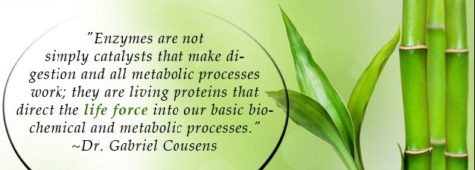
Enzymes are chemical substances produced in the living organism. They are marvelous organic catalysts which are essential to life as they control all the chemical reactions that take place in a living system. Enzymes are part of all living cells, including those of plants and animals. The term enzyme, which literally means in yeast’, was coined following the demonstration of catalytic properties of yeast and yeast juices.
Although enzymes are produced in the living cell, they are not dependent upon the vital processes of the cell and work outside the cell. Certain enzymes of yeast, for instance, when expressed from the yeast cells are capable of exerting their usual effect, that is, the conversion of sugar to alcohol.
A striking feature of enzymes is that while they enter into chemical reaction, they remain intact in the process. They however, act with maximum efficiency at a certain temperature. Lowering the temperature below or raising it above this level slows the reaction. A high degree of heat, that is above 60 o C, permanently destroys their action.
It has been estimated that there are over 20,000 enzymes in the human body. This estimate is based on the number of bodily processes that seem to require action. However, so far only about 1,000 enzymes have been identified. But their great role in nutrition and other living processes has been firmly established.
They are protein molecules made up of chains of amino acids. They play a vital role and work more efficiently than any reagent concocted by chemists. Thus for instance, a chemist can separate proteins into their component amino acids by boiling them at 166 o C for over 18 hours in a strong solution of hydrochloric acid, but the enzymes of the small intestines can do so in less than three hours at body temperature in a neutral medium.
A feature which distinguishes enzymes from inorganic catalysts is that they are absolutely specific in their actions. This means that a particular enzyme can cause reactions involving only a particular type of substance or a group of closely related substances. The substance on which the enzyme acts is known as “substrate”. The specificity of an enzyme is, however, related to the formation of the enzyme-substrate complex which requires that the appropriate groupings of both substrate and enzyme should be in correct relative position. The substrate must fit the enzyme like a key fits its lock.
Enzymes which are used in the cells which make them are called intracellular enzymes. Enzymes which are produced in cells which secrete them to other parts of the body are known as extracellular enzymes. Digestive juices are an example of the latter type.
Nomenclature
There are few enzymes whose names have been established by long usage such as ptyalin, pepsin, trypsin and erepsin. Apart from these, enzymes are usually named by adding the suffixes to the main part of the name of the substrate upon which they act. Thus amylases act upon starch (amylum), lactase acts upon lactose, lipases act upon lipids, maltase acts upon maltose and protesses act upon lipids, maltase acts upon maltose and protesses act upon proteins.
There are, however, several enzymes which act upon many substances in different ways. These enzymes are named by their functions rather than substrates. Thus, an enzyme which causes deaminations is called a deaminase and oxidizing enzyme an oxidase.
Some enzymes work efficiently only if some other specific substance is present in addition to substrate. This other substance is known as an “activator” or a “con-enzyme” . “Acti- vators” are usually inorganic ions. They increase the activity of a complete enzyme and may take part in the formation of the enzyme-substrate complex.
Many of the con-enzymes are related to vitamins. This explains why vitamin deficiencies profoundly alter metabolism. Thus, for instance, thiamine, as thiamine pyrophosphate, functions as a con-enzyme in at least 14 enzymes systems. Con-enzymes, like enzymes, are being continuously regenerated in the cells.
Enzymes play a decisive role in the digestion of food as they are responsible for the chemical changes which the food undergoes during digestion. The chemical changes comprise the breaking up of the large molecules of carbohydrates, fats and proteins into smaller ones or conversion of complex substances into simple ones which can be absorbed by the intestines. They also control the numerous reactions by which these simple substances are utilized in the body for building up new tissues and producing energy.
The enzymes themselves are not broken down or changed in the process. They remain as powerful at the end of a reaction as they were at the beginning. Moreover, very small amounts can convert large amounts of material. They are thus true catalysts.
The process of digestion begins in the mouth. The saliva in the moth, besides helping to masticate the food, carries an enzyme called ptyalin which begins the chemical action of digestion. It initiates the catabolism (breakdown) of carbohydrates by converting starches into simple sugars. This explains the need for thorough mastication of starchy food in the mouth. If this is not done the ptyalin cannot carry out its functions as it is active in an alkaline, neutral or slightly acid medium and is inactivated by the highly acid gastric juices in the stomach.
Although enzymatic action starts while food is being chewed, digestion moves into high gear only when the chewed food has passed the esophagus and reached the stomach. While the physical action of peristalsis churns and kneads solid food into a semi-solid amorphous mixture called chyme, this mixture undergoes chemical changes initiated by gastric juices secreted by the walls of the stomach. These juices include mucus for lubricating the stomach, hydrochloric acid and gastric juice.
The enzyme or active principle of the gastric juice is pepsin. This enzyme in combination with hydrochloric acid starts the breakdown of proteins into absorbable amino acids called polypeptides. An additional enzyme, rennin, plays an important role in the stomach of the infant. It curdles milk and allows the pepsin to work upon it. The gastric juice has no effect upon starches or fats. When the chyme leaves the stomach and enters the small intestine through the pylorus – the lower escape valve, it still contains much food which is in the form of raw material not yet ready for absorption in the body.
Digestion is completed inside the small intestine by several juices. From liver comes a liquid called bile which converts fat globules into a smooth emulsion. The pancreas contributes various enzymes which continue the breakdown of proteins, help to divide starch into sugars and work with bile in digesting fats. The small intestine itself secretes enzymes from its inner wall to complete the reactions.
When all the enzymes have done their work, the food is digested and rendered fit for absorption by the system.The following table briefly summarizes the chemical digestion of carbohydrates, fats and proteins by various enzymes:
Enzymes form part of the food we eat. Raw foods contain enzymes in abundance; cooking, pasteurizing, pickling, smoking and other processing denature enzymes. It is, therefore, essential to include in our diet, substantial amount of raw foods in the form of fruits, raw salads and sprouts. Studies have revealed that the body without sufficient raw materials from raw foods, may tire and produce fewer enzymes year after year. This may lead to wearing out of body processes and consequent worn-out looks.
Lecithin – An Amazing Youth Element
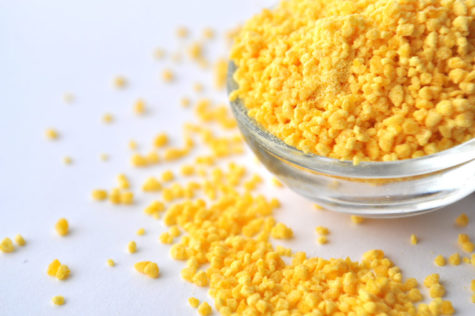
Lecithin is the most abundant of the phospholipids. It is a fatty food substance, which serves as a structural material for every cell in the body. It is an essential constituent of the human brain and nervous system. It forms 30 per cent of the dry weight of the brain and 17 per cent of the nervous system.
Lecithin is also an important component of the endocrine glands and the muscles of the heart and kidneys. It makes up 73 per cent of the total liver fat. Nervous, mental or glandular over activity can consume lecithin faster than its replacement. This may render a person irritable and exhausted. It is, therefore, of utmost importance to add lecithin to the diet, if the body’s own supply decreases as in old age or working under stress.
Rich Sources
Lecithin is derived from the Greek Word, likithos, meaning egg yolk. Egg yolk is a rich source of lecithin, and also a rich source of cholesterol. This combination makes it possible for the lecithin to emulsify the cholesterol. Vegetable oils, whole grain cereals, soy beans, liver and milk are other rich sources of lecithin.
The cells of the body are also capable of synthesizing it as needed, if several of the B vitamins are present. Since these B vitamins are generally removed when grains are refined, people who eat exclusively white flour products are lacking them.
Benefits
The action of lecithin on the heart is the most important of all its proved benefits. It achieved its popularity initially in this area. Cholesterol is a fatty substance that tends to collect in the walls of the arteries and veins, thus narrowing them. This may eventually lead to a fatal blood clot. Scientific studies have shown that lecithin has the ability to break up cholesterol into small particles which can be easily handled by the system. With sufficient intake of lecithin, cholesterol cannot build up against the walls of the arteries and veins.
Like cholesterol, lecithin is continuously produced in the liver, passes into the intestine with bile and is absorbed in the blood. It helps in the transportation of fats. It also helps the cells to remove fats and cholesterol from the blood and to utilize them. It increases the production of bile acids made from cholesterol, thereby reducing the amount in the blood. It will thus be seen that cholesterol can cause trouble only if lecithin is lacking in the system.
All atherosclerosis or changes in the arterial walls are characterized by an increased of the blood cholesterol and a decrease in lecithin. It has been shown that experimental heart disease, produced by feeding cholesterol, could be prevented merely by giving a small quantity of lecithin. Atherosclerosis has been produced in various species of animals by increasing the blood cholesterol or decreasing the lecithin.
In normal health, when a diet high in fat is taken, there is tremendous increase in the production of lecithin. This helps in changing the fat in the blood from large particles to smaller and smaller ones. In case of atherosclerosis, however, the lecithin in the blood remains very low regardless of the quantity of fat entering the blood. The result is that, the fat particles remain too large to be able to pass through the arterial walls.
A more serious situation can develop if there is lack of lecithin in cells also. Besides reducing the cholesterol level in the blood, there is mounting scientific evidence to suggest several other benefits from lecithin. It has been suggested that its intake in sufficient amounts can help rebuild those cells and organs which need it. Lecithin helps to maintain their health once they are repaired. It may mean that a deficiency of lecithin in the diet may be one of the causes of ageing and that its use may be beneficial in retarding the ageing process.
Edward R. Hewith in his book, The Years Between 75 and 90 says:
” with older people the fats remain high in the blood for from five to seven hours and in some cases as long as 20 hours, thus giving the fats more time to become located in the tissues. If lecithin is given to older people before a fatty meal, it has been found that the fats in the blood return to normal in a short time, in the same way they do in younger people.”
In some cases, the cosmetic effect of lecithin does as much for the mental outlook of persons as it does for their physical well-being. It has been found to eliminate the yellow or yellow- brown plaques on the skin or around the eyes caused by fatty deposits. It is a natural tranquilizer which is beneficial in nervous exhaustion. It can produce great alertness in elderly people.
Some studies have indicated that lecithin increases the gamma globulin in the blood. This helps fight infection. It provides an increased immunity against pneumonia. It has also been found to lower blood pressure in some people. In combination with vitamin E, it has proved helpful in lowering the requirements of insulin in diabetics. It has also proved valuable in the treatment of certain skin ailments, including acne, eczema and psoriasis.
Lecithin has been suggested as a sexual aid. It was used in Germany 30 years ago as a restorative of sexual powers, for glandular exhaustion and nervous and mental disorders. Seminal fluid is rich in lecithin. Because of its loss from the body, its need for men is regarded as specially great. Its use is also considered valuable in minimizing pre-menstrual and menopausal tension.
Dr. N.A. Ferri, an eminent physician remarks:
“Lecithin has a versatile function in life. It is an extremely important factor in the digestion and oxidation of fats, thus creating more muscle and glandular activity, resulting in greater body exertion and less fat accumulations.
Lecithin is essential not only for tissue integrity of the nervous and glandular system in all living cells, but has been regarded as also the most effective generator and regenerator of great physical, mental and glandular activity.
Shattered nerves, depleted brain power, waning activity of vital glands, find in lecithin, especially in the cellular structure of the nervous system and endocrine glands a source of dynamic energy.”
The best way to increase lecithin is to eat the same amount of fat as usual, but reduce animal fat except that from fish. Oil may be used for cooking, seasoning and salad dressing. All hydrogenated fats such as margarine, cooking fats, hydrogenated peanut butter and processed cheese should be avoided as also foods prepared with them.
Importance of Dietary Fiber
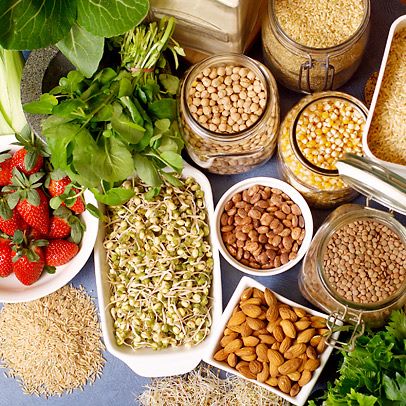
Fiber forms the skeletal system of plants. Without it no plant or tree would be able to stand upright. Dietary fiber, the roughage of yesteryear, consists of those parts of the plant foods that cannot be digested by enzymes or other digestive secretions in the alimentary canal.
Dietary fiber plays an important role in the maintenance of health and prevention of diseases. There is sufficient evidence to suggest that an artificial depletion of fiber as in case of refined cereals and sugar has over the last 100 years contributed to several degenerative diseases. Recent studies in this area indicate that sufficient intake of fiber-rich diet may help prevent obesity, colon cancer, heart disease, gallstones, irritable bowel syndrome, diverticulosis and diabetic conditions.
Studies have also established that dietary fiber is a collection of elements with a variety of functions rather than a single substance with single function as was assumed earlier. This new insight into the true nature of fiber has given the lie to old beliefs that bran is synonymous with fiber, that all fiber is fibrous or stringy and that all fiber tastes the same.
Physiological effects
Fiber in the diet promotes more frequent bowel movements and softer stools having increased weight. The softness of stools is largely due to the presence of emulsified gas which is produced by the bacterial action on the fiber. A high fiber intake results in greater efficiency in the peristaltic movement of the colon. This helps in relieving the constipation which is the main cause of several acute and chronic diseases.
Recent studies suggest that increasing the dietary fiber intake may be beneficial for patients with irritated bowel syndrome who have diarrhea and rapid colonic transit, as well as to those who have constipation and slow transit. The high fiber diet, like bran, thus regulates the condition inside the colon so as to avoid both extremes – constipation and diarrhea.
Investigations have shown that several potential carcinogens are produced in the feces. Their production is related to the acidity of the gut content. The greater the acidity in the bowel content, the less is the production of these carcinogens. The breaking down of the fiber by bacteria renders the feces more acidic. This reduces the amount of possible carcinogenic substances.
Fiber also reduces the possibility of formation of harmful toxins in the large intestine by reducing the intestinal transit time of the food contents. Dietary fiber increases the bacteria in the large intestines which require nitrogen for their growth. This in turn reduces the chances of cancerous changes in cells by reducing the amount of ammonia in the large bowel.
Fiber reduces the absorption of cholesterol in the diet. It also slows down the rate of absorption of sugars from the food in the digestive system. Certain types of fiber increase the viscosity of the food content. This increased viscosity indirectly reduces the need for insulin secreted by the pancreas. Thus a fiber-rich diet can help in diabetes mellitus.
Sources of Fiber
The most significant food sources of fiber are unprocessed wheat bran, whole cereals such as wheat, rice, barley, rye, millet; legumes such as potato, carrots, beet , turnip and sweet potato; fruits like mango and guava and leafy vegetables such as cabbage, lettuce and celery.
The percentage of fiber content per 100 grams of some foods are:
- Bran 10.5% to 13.5%
- Whole grain cereals 1.0% to 2.0 %
- Nuts 2.0% to 5.0%
- Legumes 1.5% to 1.7%
- Vegetables 0.5% to 1.5%
- Fresh fruits 0.5% to 1.5%
- Dried fruits 1.0% to 3.0%
The foods which are completely devoid of fiber are meat, fish, eggs, milk, cheese, fats and sugars. Bran, the outer coverings of grains, is one of the richest sources of dietary fiber. And it contains several types of fiber including cellulose, hermicellulose and pectin. Wheat and corn bran are highly beneficial in relieving constipation.
Experiments show that oat bran can reduce cholesterol levels substantially. Corn bran is considered more versatile. It relieves constipation and also lowers LDL cholesterol, which is one of the more harmful kinds.
Besides being rich in fiber, bran has a real food value being rich in time, iron and vitamins and containing a considerable amount of protein. Dr.Dennis P. Burkitt, a noted British physician remarks, ” Grain roughage, such as rich bran and wheat bran, are an essential part of a healthy diet, and a preventive against diseases like piles, constipation, bowel cancer, varicose veins and even coronary thrombosis. ” Dr. Burkitt worked for many years in Africa and found after a series of observations that rural Africans who eat bulk of fibrous foods rarely suffer from any of these diseases.
Legumes have high fiber content. Much of this fiber is water- soluble, which makes legumes likely agents for lowering cholesterol. Soy beans, besides this, can also help control glucose levels. The types of fiber contained in vegetables and fruits contribute greatly towards good health. The vegetables with the biggest fiber ratings include sweet corn, carrots, potatoes, parsnips and peas. And among the high ranking fruits are raspberries, pears, strawberries and guavas.
Types of Fiber
There are six classes of fiber. They are cellulose, hemicellouse, pectin, gums, mucilage and lignin. They differ in physical properties and chemical interactions in the gut, though all except lignin are poly-saccharides. The facts known so far about these forms of fiber as a result of various studies are discussed below.
- Cellulose :
It is the most prevalent fiber. It is fibrous and softens the stool. It abounds in fruits, vegetables, bran, whole-meal bread and beans. It is also present in nuts and seeds. It increases the bulk of intestinal waste and eases it quickly through the colon. Investigations indicate that these actions may dilute and flush cancer-causing toxins out of the intestinal tract. They also suggest that cellulose may help level out glucose in the blood and curb weight gain.
- Hermicellulose :
It is usually present wherever cellulose is and shares some of its traits. Like cellulose, it helps relieve constipation, waters down carcinogens in the bowel and aids in weight reduction. Both cellulose and hemicellulose undergo some bacterial breakdown in the large intestine and this produces gas.
- Pectin :
This form of fiber is highly beneficial in reducing serum cholesterol levels. It, however, does not have influence on the stool and does nothing to prevent constipation. Research is being conducted to ascertain if pectin can help eliminate bile acids through the intestinal tract thereby preventing gallstones and colon cancer. It is found in apples, grapes, berries, citrus fruits, guava, raw papaya and bran.
- Gums and Mucilage :
They are the sticky fibers found in dried beans, oat bran and oatmeal. Investigations have shown that they are useful in the dietary control of diabetes and cholesterol.
- Lignin :
The main function of lignin is to escort bile acid and cholesterol out of the intestines. There is some evidence that it may prevent the formation of gallstones. It is contained in cereals, bran, whole meal flour, raspberries, strawberries, cabbage, spinach, parsley and tomatoes.
Best Practices
The best way to increase fiber content in the diet is to increase the constipation of wholemeal bread, brown rice, peas beans, lentils, root vegetables and sugar -containing fruits, such as dates, apples, pears and bananas. The intake of sugar, refined cereals, meat, eggs and dairy products should be reduced. Candies, pastries, cakes which are rich in both sugar and fat, should be taken sparingly. White processed bread should be completely eliminated from the diet.
Daily Requirements
There are divergent views as to the requirement of dietary fiber for good health. There is no recommended daily dietary allowance for it and hardly any data about optimum amounts. Some Africans known for lower incidence of degenerative diseases take about 150 grams of fiber a day. In Europe and North America, where there is a high incidence of such diseases, people take 25 grams or less a day.
Dr. John H. Cummings, a noted fiber expert in England, considers that a fiber intake of 30 grams (about one ounce) per day is sufficient for good health. Excessive consumption of fiber, especially bran, should however, be avoided.
Due to its content of crude fiber, bran is relatively harsh and it may irritate the delicate functioning of the digestive system, especially in the sick and the weak. Excessive use of fiber may also result in loss of valuable minerals like calcium, phosphorus, magnesium and potassium from the body through excretion due to quick passage of food from the intestine.
Health Promotion the Vegetarian Way
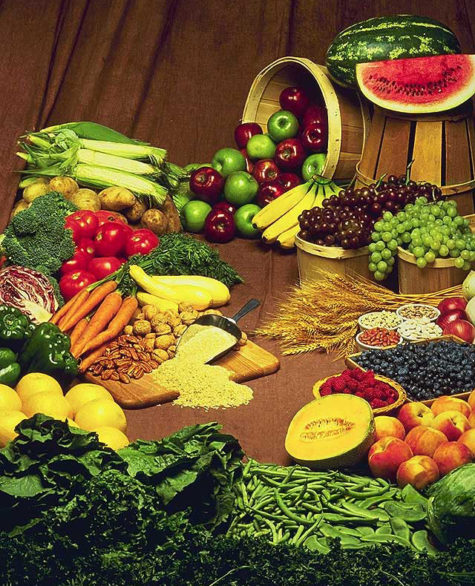
The word ” Vegetarian ” was coined by the Vegetarian Society of the United Kingdom in about 1847. The word does not come from vegetable as is generally assumed : It is a derivation of the Latin word ‘ vegetari ‘ which means to enliven.
The practice of vegetarianism, however, goes far back in history. Many noted philosophers and religious teachers urged their followers to avoid a flesh diet. Brahminism, Jainism, Zoraostrianism and Buddhism acknowledged the sacredness of life and the need to live without causing suffering; so did many of the early Christians.
There are various types of vegetarians. ” Vegans “are the strictest vegetarians who eat only plant foods and exclude all animal by-products such as eggs, milk, cheese, curd, butter, ghee and even honey. There are ” lacto vegetarians ” who eat plant foods as well as dairy products and ” lacto-avo vegetarians ” who eat eggs besides plant foods and dairy products. There are even fish-eating vegetarians. The common factor among them is that they do not eat the flesh of warm- blooded animals.
Meat seems to have assumed an exaggerated importance nutritionally. It is generally mistakenly believed that nutritional deficiencies , especially of proteins and vitamin B12 and poor health may result if animal foods are eliminated. Studies however, have indicated to health problems or deficiency diseases for those on a vegetarian diet.
Of the 22 amino acids -the essential components of proteins – needed by the body for its normal functioning, only nine need be supplied by the diet as the body synthesizes the remaining 13. The body can use 100 per cent of this protein if all ten amino acids are in ideal proportions. If, however, one or more of the essential amino acids are present in less than the ideal amount, the value of the entire protein is reduced in the same proportions. On a quality rating scale of 1 to 100, egg protein is 95, milk is 82, meat and poultry are 67, fish 80, grains are between 50 to 70 and legumes, nuts and seeds are between 40 and 60.
The so-called protein deficiency in a vegetarian diet is in fact more imaginary than real as the contribution of the protein value of the green vegetables has been ignored and the true protein requirement is less than that assumed. Green vegetable protein is as high in quality as milk protein and thus makes a very valuable contribution to the vegetarian’s protein nutrition. The high quality of protein balances the lower quality of other vegetarian proteins such as nuts and beans.
The recommended daily allowance of 70 value proteins is 44 grams per day for women and 56 for men. Researchers have now discovered that the actual protein requirement is much less, being 15 grams per day of 100 value protein or 21.5 grams of 70 value protein or 30 grams of 50 value protein. A wholesome vegetarian diet can, therefore, easily meet the body’s protein needs.
Moreover, it is possible to combine two low-value plant proteins to get a protein of higher quality. Thus, wheat which has a deficiency in the amino-acid lysine but an abundance of sulphur containing amino-acids can be combined with beans which have the opposite enrichment combination. Taken together, they complement each other to form a complete protein.
As regards the adequacy of B12 nutrition, laco-avo vegetarians and lacto-vegetarians should not feel concerned on this score, as the B12 needs can be easily supplied by dairy products and eggs. A quarter liter of milk or 100 grams of cheese or 1 egg per day will supply the recommended daily allowance. This vitamin once eaten is stored in the liver. Vegans, however, do not get this vitamin in their food, yet reliable scientific studies have found no evidence of B12 deficiency diseases. It is therefore, presumed that this vitamin can be synthesized in the body.
Auto-Intoxication
Most diseases of the human body are caused by auto-intoxication or self-poisoning. The flesh of animals increases the burden of the organs of elimination and overloads the system with animal waste matter and poisons. Chemical analysis has proved that uric acid and other uremic poisons contained in the animal body are almost identical to caffeine, there and nicotine, the poisonous stimulating principles of coffee, tea and tobacco. This explains why meat stimulates the animal passions and creates a craving for liquor, tobacco and other stronger stimulants.
Excessive uric acid resulting from meat-eating also causes diseases such as rheumatism, Bright’s disease, kidney stones, gout and gall stones. Meat proteins cause putrefaction twice as rapidly as do vegetable proteins. The morbid matter of the dead animal body is foreign and uncongenial to the excretory organs of man. It is much harder for them to eliminate the waste matter of an animal carcass than that of the human body. Moreover, the formation of ptomains or corpse poisons begins immediately after the death of the animal and meat and poultry are usually kept in cold storage for many days and even months before they reach the kitchen.
Another powerful influence tends to poison the flesh of slaughtered animals. As is well known, emotions of worry, fear and anger actually poison blood and tissues. Imagine the excitable condition of animals after many days of travel, closely packed in shaking vehicles – hungry, thirsty, scared en route to the slaughter -houses. Many die even before the end of their journey. Others are driven half dead with fear and exhaustion to the slaughter pans, their instinctive fear of death augmented by the sight and odor of the blood shambles.
Flesh is often a carrier of disease germs. Diseases of many kinds are on the increase in the animals, making flesh foods more and more unsafe. People are continually eating flesh that may contain tuberculosis and cancerous germs. Often animals are taken to the market and sold for food when they are so diseased that their owners do not wish to keep them any longer. And some of the processes of fattening them to increase their weight and consequently their market value, produce disease. Shut away from light and pure air, breathing the atmosphere of filthy stables, perhaps fattening on decaying foods, the entire body now becomes contaminated with foul matter.
Benefits of Vegetarianism
A vegetarian diet can have many nutritional benefits, if it is rich in fruits and vegetables, and contains moderate amounts of seeds, nuts, whole grains and legumes. One of the main benefits of a proper vegetarian diet is its low caloric content in relation to the bulk supplied, which helps maintain ideal weight.
Another benefit of the vegetarian diet is the much lower intake of fat, if dairy products, seeds and nuts are eaten sparingly. This accounts for lower serium cholesterol levels found in vegetarians, which considerably reduces the risk of developing heart diseases and breast and colon cancer.
A third nutritional advantage of the vegetarian diet is its high fiber content. Fiber, being indigestible, increases the bulk of the faces, keeps them soft and makes them easy to expel. One study has indicated that lacto-avo vegetarians consume twice as much and vegans four times as much fiber as non-vegetarians. High fiber intake has been associated with decreased risks of diseases of the colon, appendicitis, cancer of the colon and rectum, hiatus hernia, piles and varicose veins.
McCarrison, one of the greatest authorities on food, has outlined a perfect diet. According to him:
” a perfectly constituted diet is one in which the principal ingredients are milk, milk products, any whole cereal grain or mixture of cereal grains, green leafy vegetables and fruits. These are the protective foods. They make good the defects of other constituents of the diet, protect the body against infection and disease of various kinds, and their use in sufficient quantity ensures physical efficiency. ”
Vegetarianism is thus a system based on scientific principles and has proved adequate for the best nutrition free from the poisons and bacteria of diseased animals. It is the best diet for man’s optimum, physical, mental and spiritual development.
Secrets of Food Combining

The observance of rules of food combining is neither faddish nor eccentric. It is a simple, scientifically -based system of selecting foods, from among different types, which are compatible. This facilitates easy and efficient digestion and ensures after-meal comfort. Digestion is not merely chemical or physical process, but also a physiological one.
When food enters the body, it undergoes several changes before it is broken down into its constituent parts and assimilated. But no food can be assimilated by the system and used by various organs unless it has first been digested and then absorbed in the digestive system known as alimentary canal, while the residue, unfit for absorption is eliminated from the system.
The chemical part of digestion is accomplished by a series of juices and their enzymes. The juices alternate between alkalies and acids, and their character is determined by the requirement of the enzymes they contain. These enzymes remain active in suitable media of well defined acid-alkaline ranges and are destroyed in unsuitable media.
For instance, the salivary amylase (ptyalin) or starch-splitting enzyme of the mouth is active only in an alkaline media and is destroyed by a mild acid. The gastric enzyme, pepsin, which initiates protein digestion, is active only in the acid medium and is destroyed by alkalies.
A noteworthy feature of the digestive secretions is that the body suits its fluid and enzymes to the character of the food eaten. There are, however, severe limitations in this process. It is possible to suit the juices to a particular food, however, complex it may be, but not to a variety of foods taken together. It is the combining of many varieties and incompatible foods at a meal that causes 90 per cent of digestive disorders.
There is a marked tendency to gastro-intestinal fermentation with certain combinations of foods. There is no fermentation and digestion will be much more satisfactory when the foods comprising a meal are of the same type. This generally means eating similar foods at one time in order to accomplish the most complete digestion.
The most important rule for combining foods is to avoid mixing protein and carbohydrate concentrated foods. Although every food contains some protein, those regarded as protein concentrated foods demand the longest digestive time. They are held in the stomach for some hours until the gastric juices has performed its task. This may vary from two-and-a-half to six hours, depending upon the complexity of the protein in the food.
If a protein food is mixed with starch-concentrated or sugar-concentrated foods, it will usually result in fermentation. This may lead to indigestion and gas in the stomach. Animal-food proteins, such as meats, fish and cheese, require very high concentration of hydrochloric acid. Their gastric digestion will be greatly inhibited by carbohydrate fermentation in the stomach. This will produce more gas and increased discomfort. Eating meat, potatoes, bread and sweets should, therefore, be especially avoided.
Protein foods are best digested when eaten with fresh vegetable salad. Primary protein foods such as nuts, seeds and soy beans also combine very well with acid fruits like oranges, pineapples, grapefruit and lemons, and fairly well with sub-acid fruits, like grapes, pears, apples, berries, apricots and peaches. These vegetables and fruits are rich natural sources of vitamin C which aids protein digestion.
The second important rule for food combining is to avoid mixing proteins and fats at the same meal. Fat in foods inhibits the secretion of gastric juice through the small wall. Thus when fat-concentrated foods are taken with protein foods, gastric catabolism will decrease by the degree of liquid concentration in the stomach. Fat will remain undigested in the stomach until gastric juices complete their work on the complex protein molecule.
Although all primary protein foods contain high concentration of fat, such lipids will be held in suspension, awaiting catabolism in the intestine, without impeding gastric action. Free fats like oil, butter, and milk tend to coat the gastric mucoa, thereby inhibiting its effort to secrete gastric juice. Fat surrounding fried foods is also regarded as free fat and it interferes with gastric catabolism.
Another important rule for food combining is to avoid mixing carbohydrates and acid fruits in the same meal. The starch-splitting enzyme ptyalin in the saliva plays an important role as the food is chewed. It converts the complex starch molecules into simpler sugars. Ptyalin requires a neutral or slightly alkaline medium for proper functioning and this is the normal condition of the saliva in the mouth. However, when acid foods are taken, the action of ptyalin is halted.
It is, therefore, necessary to avoid acid fruits in the same meal as sweet fruits or starches. Thus tomatoes should not be eaten with starches especially potatoes or bread. Refined sugar products are also acidic, both in the mouth and in the bloodstream. The acidifying of the saliva by sucrose is one of the main causes of tooth decay. It can also cause severe damage to the digestion. Food combining is designed to facilitate easier digestion.
In a nutshell:
- Starches, fats, green vegetables and sugars may be eaten together as they require either an alkaline or neutral medium for their digestion
- Proteins, green vegetables and acid fruits may be eaten together as they require an acid or neutral medium for their digestion
- Starches and proteins; fats and proteins; and starches and acid fruits should not be eaten together as a general rule
This in brief is the whole basis for successful food combination. An important point to remember about meals is that the smaller the number of courses they consist of, the better it will be. They should approximate to a one-course meal as much as possible. Simple meals in every way are more conducive to health, than more elaborate ones, no matter how well they may be combined.
A meal consisting of proteins, carbohydrates and fats may remain in the stomach for six to seven hours before the stomach is emptied. If carbohydrates are eaten without proteins, they remain in the stomach for a relatively short period. A fruit meal remains in the stomach for even shorter time. It is advisable to eat these different foods at different meals – a fruit meal, a starch meal and a protein meal.
The ideal practice is a fruit meal for breakfast, a starch meal with salad and non- starchy vegetables for lunch, and a protein meal with a salad and non-starchy vegetables for dinner.
Miracles of an Alkalizing Diet
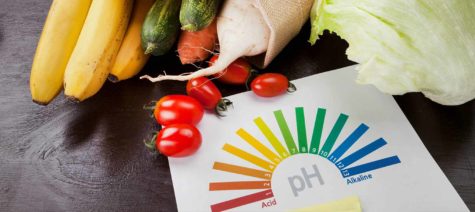
The human body is composed of various organs and parts, which are made up of tissues and cells. These tissues and cells are composed of 16 chemical elements. The balance or equilibrium of these chemical elements in the body is an essential factor in the maintenance of health and healing of disease. The acid-alkaline balance plays a vital role in this balanced body chemistry.
All foods, after digestion and absorption leave either an acid or alkaline ash in the body depending on their mineral composition. The normal body chemistry is approximately 20 per cent acid and 80 per cent alkaline. This is the acid-alkaline balance. In normal health, the reaction of the blood is alkaline and that is essential for our physical and mental well-being.
The preponderance of alkali in the blood is due to the fact that the products of the vital combustion taking place in the body are mostly acid in character. Carbohydrates and fats form about nine-tenths of the normal fuel of the body.
In normal health, this great mass of material is converted into carbon dioxide gas and water. Half of the remaining one-tenth fuel is also converted into the same gas and water. This huge amount of acid is transported by the blood to the various points of discharge, mainly the lungs. By virtue of alkalinity, the blood is able to transport the acid from the tissues to the discharge points.
Acidosis
Whenever the alkalinity of the blood is reduced, even slightly, its ability to transport the carbon dioxide gets reduced. This results in the accumulation of acid in the tissues. This condition is known as acidosis or hypo-alkalinity of the blood. Its symptoms are hunger, indigestion, burning sensation and pain in the pharynx, nausea, vomiting, headache, various nervous disorders and drowsiness.
Acidosis is the breeding ground for most diseases. Nephritis or Bright’s disease, rheumatism, premature old age, arteriosclerosis, high blood pressure, skin disorders and various degenerative diseases are traceable to this condition. It seriously interferes with the functions of the glands and organs of the body. It also lowers the vitality of the system, thereby increasing the danger of infectious diseases.
The main cause of acidosis or hypo-alkalinity of the blood is faulty diet, in which too many acid forming foods have been consumed. In the normal process of metabolism or converting the food into energy by the body, various acids are formed in the system and in addition, other acids are introduced in food. Whenever there is substantial increase in the formation of acids in the system and these acids are not properly eliminated through the lungs, the kidneys and the bowels , the alkalinity of the blood is reduced, resulting in acidosis.
Other causes of acidosis are depletion of alkali reserve due to diarrhea, dysentery, cholera etc., accumulation of carbon dioxide in asphyxia and anoxia as in circulatory and pulmonary diseases and accumulation of acetone bodies resulting from starvation, vomiting and diabetes mellitus.
Acidosis can be prevented by maintaining a proper ratio between acid and alkaline foods in the diet. Certain foods leave alkaline ash and help in maintaining the alkalinity of the food, while others leave highly acid ash and lower the alkali reserve of the blood and tissue fluids to a very large extent. Eggs do the same but less strongly than meats. Cereals of all kinds, including all sorts of breads are also acid-forming foods , though much less than meats.
All fruits, with exceptions like plums and prunes and all green and root vegetables are highly alkaline foods and help to alkalinize the blood and other tissue fluids. Thus, our daily diet should consist of four-fifth of alkaline-forming foods such as juicy fruits, tubers, legumes, ripe fruits, leafy and root vegetables and one fifth of acid-forming foods containing concentrated proteins and starches such as meat, fish, bread and cereals.
Eating sensibly in this manner will ensure the necessary alkalinity of the food which will keep the body in perfect health. Whenever a person has acidosis, the higher the ratio of alkaline forming foods in his diet, the quicker will be the recovery. Acids are neutralized by alkali. It is, therefore, imperative that persons suffering from various ailments are given adequate alkaline ash foods to offset the effects of acid-forming foods and leave a safe margin of alkalinity.
The most agreeable and convenient means of alkalizing the blood are citrus fruits and fruit juices. The alkalizing value of citrus fruits are due to large percentage of alkaline salts, mainly potash, which they contain. Each pint of orange juice contains 12 grains of potassium, one of the most potent of alkalis. Lemon juice contains nine grains of the alkali to the pint and grape seven grains.
Diet in Disease
In the diet during disease, breakfast may consist of fresh fruits, lunch may comprise raw vegetables with acid and sub-acid fruits, and for dinner raw and cooked vegetables, or light starchy vegetables like beet, carrot, cauliflower, egg-plant and squashes may be taken. Sweet fruits may be added to this diet after seven days.
Foods are classified as acid-producing or alkaline-producing depending on their reaction on the urine. Calcium, magnesium, sodium and potassium present in foods contribute to the alkaline effect, while sulfur, phosphorous and chlorine contribute to the acidic effect.
Depending on the predominating constituents in a particular food, it is classified as acid-forming or alkaline-forming. The effect of food stuffs upon the alkalinity of the blood depends upon their residue which they leave behind after undergoing oxidation in the body.
It is an error to presume that because a food tastes acid, it has an acidic reaction in the blood. For instance, fruits and vegetables have organic acids in combination with soda and potash in the form of acid salts. When the acids are burnt or utilized in the body, the alkaline soda or potash is left behind. Hence the effect of the natural fruit acids is to increase the alkalinity of the blood rather than reduce it.
Based on the above observations, the following charts show the common foods with acid and alkaline ash :
Foods Leaving An Acid Ash
The following foods are best if limited to one fifth of your total diet.
- Bananas (unripe)
- Barley
- Beans
- Bread
- Cakes
- Cereals
- Chicken
- Chocolate
- Coffee
- Confections
- Corn
- Eggs
- Grain Foods
- Lentils
- Meats
- Nuts except almonds
- Oatmeal
- Peas
- Rice
- Sea Foods
- Sugar
- Tea
Foods Leaving An Alkaline Ash
The following foods should take up about four-fifths of your total diet.
- Apricots
- Almonds
- Apples
- Banana (ripe)
- Beets
- Cabbage
- Carrots
- Cauliflower
- Celery
- Coconuts
- Cottage Cheese
- Cucumbers
- Dates
- Figs ( Fresh and Dry)
- Grapes
- Lemons
- Lettuce
- Melons
- Milk
- Onions
- Oranges
- Parsley
- Peaches
- Pears
- Pineapple
- Potatoes
- Pumpkins
- Radishes
- Raisins
- Soy beans
- Spinach
- Tomatoes
- Turnips
